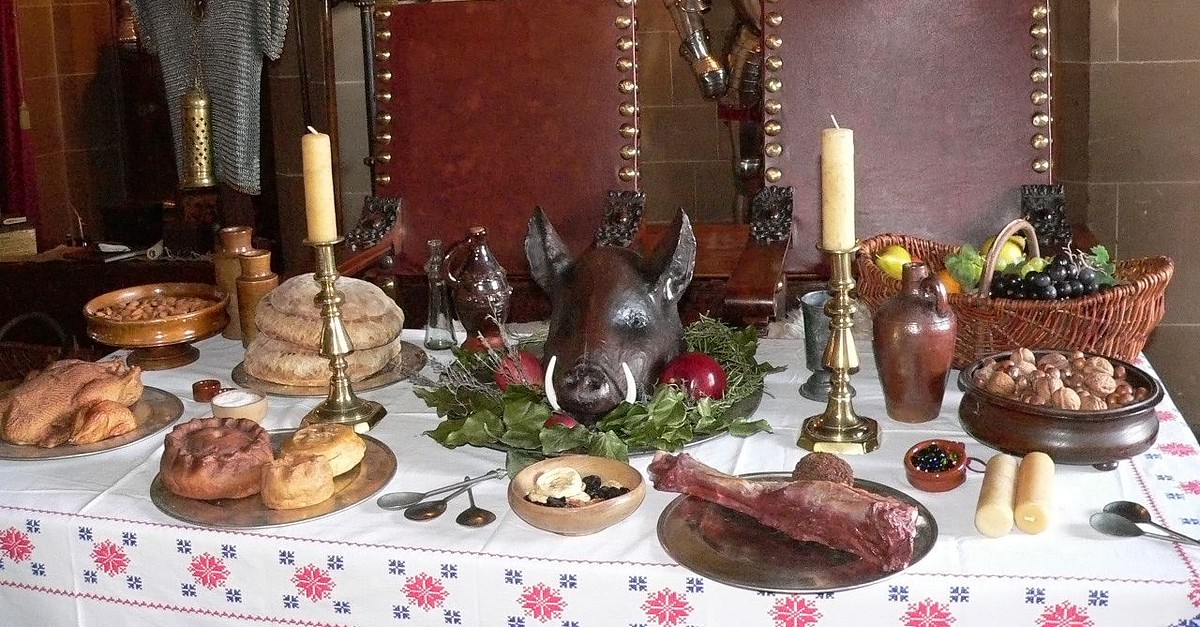
Medieval food manual#

Liber Cure Cocorum (15th century English).Norwegian Primary Sources (one c.1300, one 1614)Īnd a transcription of the Italian (14th/15th century).1393, in French, partial, also an English translation) Le Viandier de Taillevent (French, 1375-1390).Another listing of online cookbooks and Works in Progress.European Cookery Texts 1350-1800 (several primary sources).A glossary of medieval and renaissance culinary terms.An Annotated Renaissance Food Bibliography.Cooking from Primary Sources: Some General Comments (from Cariadoc's Miscellany).Introduction to Cariadoc & Elizabeth's Recipes (bibliography, ingredients).Primary Sources, Reference, Bibliography General Jump to: Primary Sources, Articles/Publications, Individual Recipes, Mailing Lists, Other Information of Interest. This a subpage of the SCA Arts and Sciences homepage. Professor Evershed added: "West Cotton was one of the first archaeological sites we worked on when we began developing the organic residue approach – it is extraordinary how, by applying the suite of the latest methods, we can provide information missing from historical documents.Medieval and Renaissance Food: Sources, Recipes, and Articles Medieval and Renaissance Food: Sources, Recipes, and Articles “This study has provided valuable information on diet and animal husbandry by medieval peasants and helped illustrate agricultural production, consumption and economic life in one of England’s early medieval villages.”

The research also showed that dairy products, likely the ‘green cheeses’ known to be eaten by the peasantry, also played an important role in their diet.ĭr Dunne added: “Food and diet are central to understanding daily life in the medieval period, particularly for the medieval peasant. The findings demonstrated that stews (or pottages) of meat (beef and mutton) and vegetables such as cabbage and leek, were the mainstay of the medieval peasant diet.
/479511499-56a48f525f9b58b7d0d78b7d.jpg)
These can survive over thousands of years and the compounds found are one of the best ways scientists and archaeologists can determine what our ancestors ate. Researchers used chemical and isotopic techniques to identify lipids, the fats, oils and natural waxes of the natural world, from the ceramics. It is mainly used on ancient pottery, which is the most common artefact found on archaeological sites worldwide. Organic residue analysis is a scientific technique commonly used in archaeology. The OGU team used the technique of organic residue analysis to chemically extract food residues from the remains of cooking pots used by peasants in the small medieval village of West Cotton in Northamptonshire. The scarce historical documents that exist that tell us that medieval peasant ate meat, fish, dairy products, fruit and vegetables but there is little direct evidence for this. “Much is known of the medieval dietary practices of the nobility and ecclesiastical institutions, but less about what foods the medieval peasantry consumed.” “Traditionally, we focus on the important historical figures as these are the people discussed in ancient documents. Julie said: “All too often in history the detail, for example food and clothing, of the everyday life of ordinary people is unknown. The researchers were also able to look at butchery techniques, methods of food preparation and rubbish disposal at the settlement Dr Julie Dunne and Professor Richard Evershed from the University of Bristol’s Organic Geochemistry Unit, based within the School of Chemistry, led the research, published today in the Journal of Archaeological Science. Using chemical analysis of pottery fragments and animal bones found at one of England’s earliest medieval villages, combined with detailed examination of a range of historical documents and accounts, the research has revealed the daily diet of peasants in the Middle Ages.


 0 kommentar(er)
0 kommentar(er)
